2-Aminoanthraquinone
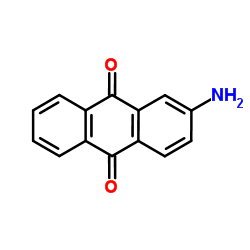
2-Aminoanthraquinone structure
|
Common Name | 2-Aminoanthraquinone | ||
|---|---|---|---|---|
| CAS Number | 117-79-3 | Molecular Weight | 223.227 | |
| Density | 1.4±0.1 g/cm3 | Boiling Point | 472.9±34.0 °C at 760 mmHg | |
| Molecular Formula | C14H9NO2 | Melting Point | 292-295 °C (dec.)(lit.) | |
| MSDS | Chinese USA | Flash Point | 239.8±25.7 °C | |
| Symbol |

GHS08 |
Signal Word | Warning | |
| Name | 2-Aminoanthraquinone |
|---|---|
| Synonym | More Synonyms |
| Density | 1.4±0.1 g/cm3 |
|---|---|
| Boiling Point | 472.9±34.0 °C at 760 mmHg |
| Melting Point | 292-295 °C (dec.)(lit.) |
| Molecular Formula | C14H9NO2 |
| Molecular Weight | 223.227 |
| Flash Point | 239.8±25.7 °C |
| Exact Mass | 223.063324 |
| PSA | 60.16000 |
| LogP | 2.75 |
| Vapour Pressure | 0.0±1.2 mmHg at 25°C |
| Index of Refraction | 1.708 |
| InChIKey | XOGPDSATLSAZEK-UHFFFAOYSA-N |
| SMILES | Nc1ccc2c(c1)C(=O)c1ccccc1C2=O |
| Stability | Stable. Incompatible with strong oxidizing agents. |
CHEMICAL IDENTIFICATION
HEALTH HAZARD DATAACUTE TOXICITY DATA
MUTATION DATA
|
| Symbol |

GHS08 |
|---|---|
| Signal Word | Warning |
| Hazard Statements | H351 |
| Precautionary Statements | P281 |
| Personal Protective Equipment | Eyeshields;full-face particle respirator type N100 (US);Gloves;respirator cartridge type N100 (US);type P1 (EN143) respirator filter;type P3 (EN 143) respirator cartridges |
| Hazard Codes | Xn:Harmful; |
| Risk Phrases | R40 |
| Safety Phrases | S36/37/39 |
| RIDADR | NONH for all modes of transport |
| WGK Germany | 3 |
| RTECS | CB5120000 |
| Packaging Group | II |
| HS Code | 2922399090 |
| Precursor 9 | |
|---|---|
| DownStream 9 | |
| HS Code | 2922399090 |
|---|---|
| Summary | 2922399090 other amino-aldehydes, amino-ketones and amino-quinones, other than those containing more than one kind of oxygen function; salts thereof VAT:17.0% Tax rebate rate:9.0% Supervision conditions:none MFN tariff:6.5% General tariff:30.0% |
|
Reversible off-on fluorescence probe for hypoxia and imaging of hypoxia-normoxia cycles in live cells.
J. Am. Chem. Soc. 134(48) , 19588-91, (2012) We report a fully reversible off-on fluorescence probe for hypoxia. The design employs QSY-21 as a Förster resonance energy transfer (FRET) acceptor and cyanine dye Cy5 as a FRET donor, based on our f... |
|
|
[A routine analytical method for carcinogenic isomers in commercial 1-aminoanthraquinone and 1-aminoanthracene by high performance liquid chromatography].
Sangyo. Igaku. 28(2) , 124-5, (1986)
|
|
|
Alterations in drug-metabolizing enzymes during feeding of the carcinogen 2-aminoanthraquinone.
Toxicol. Appl. Pharmacol. 60(2) , 204-12, (1981)
|
| EINECS 204-208-4 |
| 2-Amino-9,10-anthraquinone |
| 2-Aminoanthraquinone |
| 9,10-Anthracenedione, 2-amino- |
| MFCD00001233 |
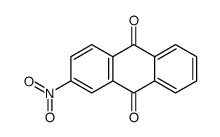 CAS#:605-27-6
CAS#:605-27-6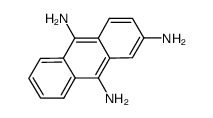 CAS#:1234379-65-7
CAS#:1234379-65-7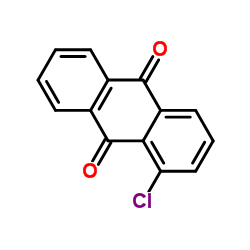 CAS#:82-44-0
CAS#:82-44-0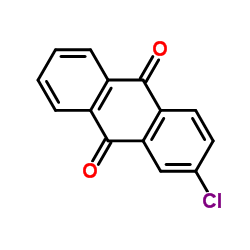 CAS#:131-09-9
CAS#:131-09-9 CAS#:131-08-8
CAS#:131-08-8 CAS#:82-45-1
CAS#:82-45-1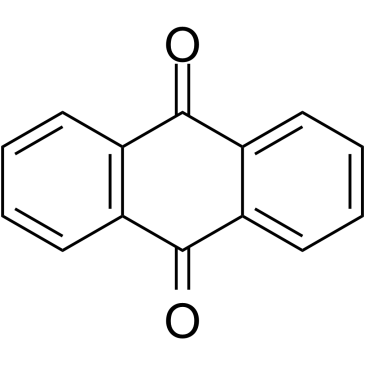 CAS#:84-65-1
CAS#:84-65-1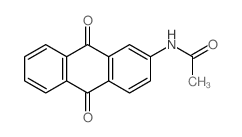 CAS#:3274-22-4
CAS#:3274-22-4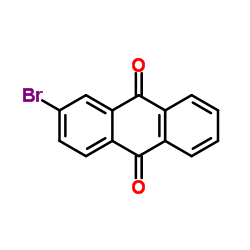 CAS#:572-83-8
CAS#:572-83-8 CAS#:10262-82-5
CAS#:10262-82-5 CAS#:10566-32-2
CAS#:10566-32-2 CAS#:475-71-8
CAS#:475-71-8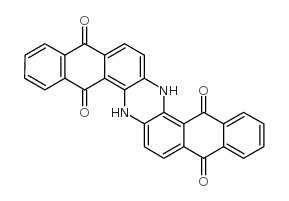 CAS#:81-77-6
CAS#:81-77-6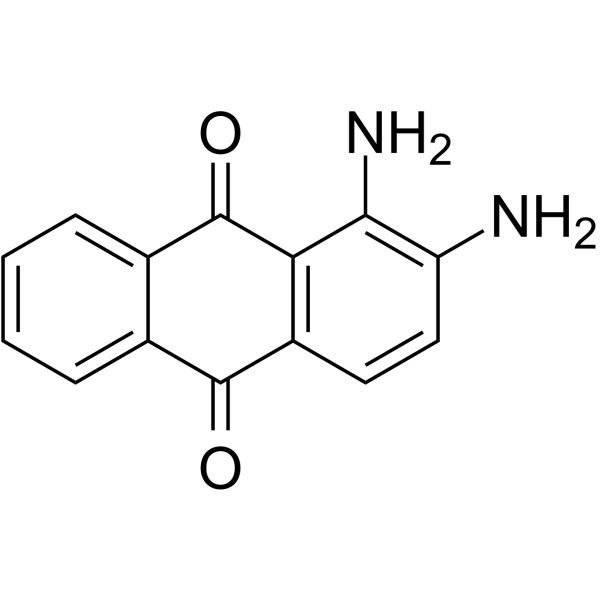 CAS#:1758-68-5
CAS#:1758-68-5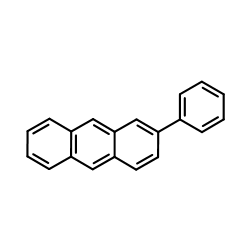 CAS#:1981-38-0
CAS#:1981-38-0 CAS#:2143-81-9
CAS#:2143-81-9 CAS#:72-48-0
CAS#:72-48-0 CAS#:568-99-0
CAS#:568-99-0
